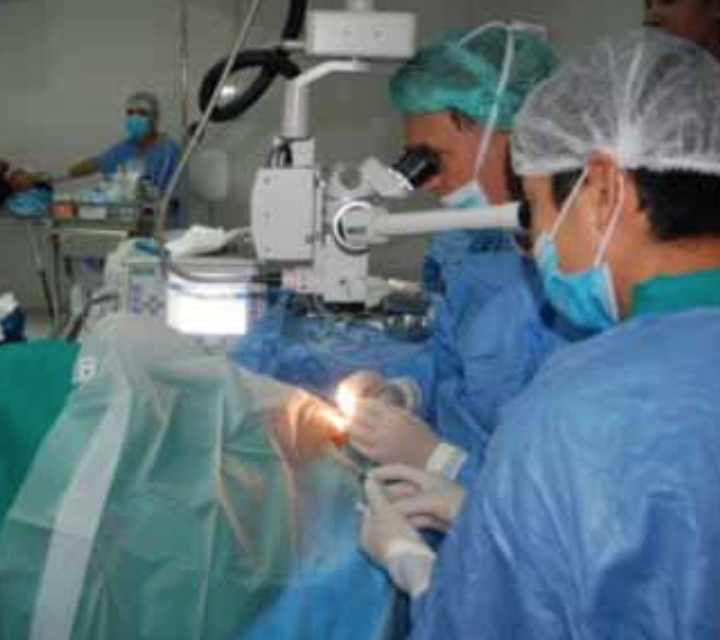Patients in Oudomxay and nearby provinces with cataract problems will no longer need to travel far for treatment with modern corrective surgery available at the central hospital.
Modern medical equipment for Phacoemulsification was handed over recently to the hospital’s Eye Unit with US$52,540 in support from the Lao Rehabilitation Foundation (LRH) which includes the cost of training local doctors in cataract surgery.
The training was undertaken by LRH’s eye expert Dr Michel Pierre Gelinas, who instructed local doctors about the small incision cataract surgery.
The new training and medical equipment will help doctors at the hospital to undertake cataract surgery more effectively.
The prevalence of blindness rate in Laos was 2.8 percent with up to 65.3 percent of overall cases due to cataracts, according to a survey in 2007.
The incidence rate among of the population in ASEAN member countries was 0.1 percent. Cases were mostly found in the elderly, while others occurred because of eye injuries, diabetes and also from genetic defects, but the condition can be treated, according to World Health Orgnisation.
“Preventable blindness is a significant global health problem which hinders development and disproportionately impacts the poor, yet much of it can be prevented or treated,” An ophthalmologist from the hospital Dr Phetsamone Indara said.
Over the years, the LRF has covered the cost of the medical team’s transportation and surgery, hospitalisation and transportation expenses for poor patients, plus eye glasses and medical prescriptions.
A recent survey in Laos estimated that 3 percent of the population aged 50 years old and above is blind. This prevalence level contrasts with that of a developed country such as Australia, which is under 1 percent.
Primarily, blindness in Laos is caused by cataracts and low vision is caused by uncorrected refractive errors.
Besides the impact of vision loss on a person’s quality of life, there is also a substantial economic loss associated, including increased unemployment, decreased productivity and increased welfare costs.
The prevalence of blindness is estimated to be as high as 5 percent in some rural or remote areas of the country. Women account for up to twice as many cases of blindness as men.
Source: Vientiane Times



